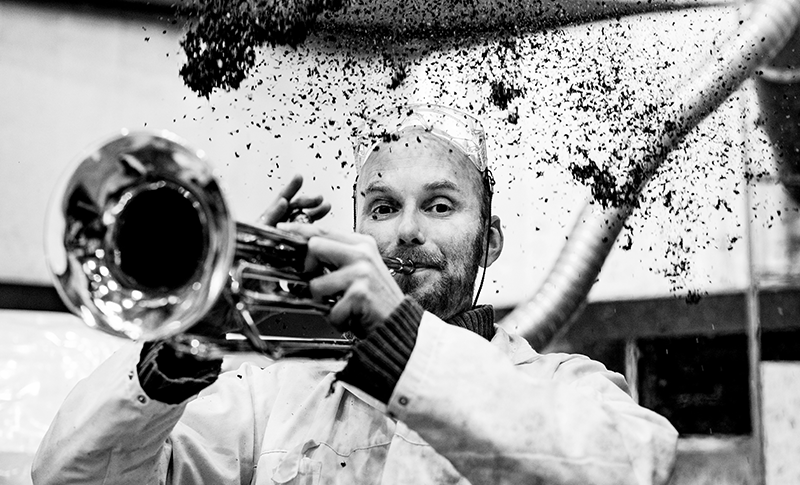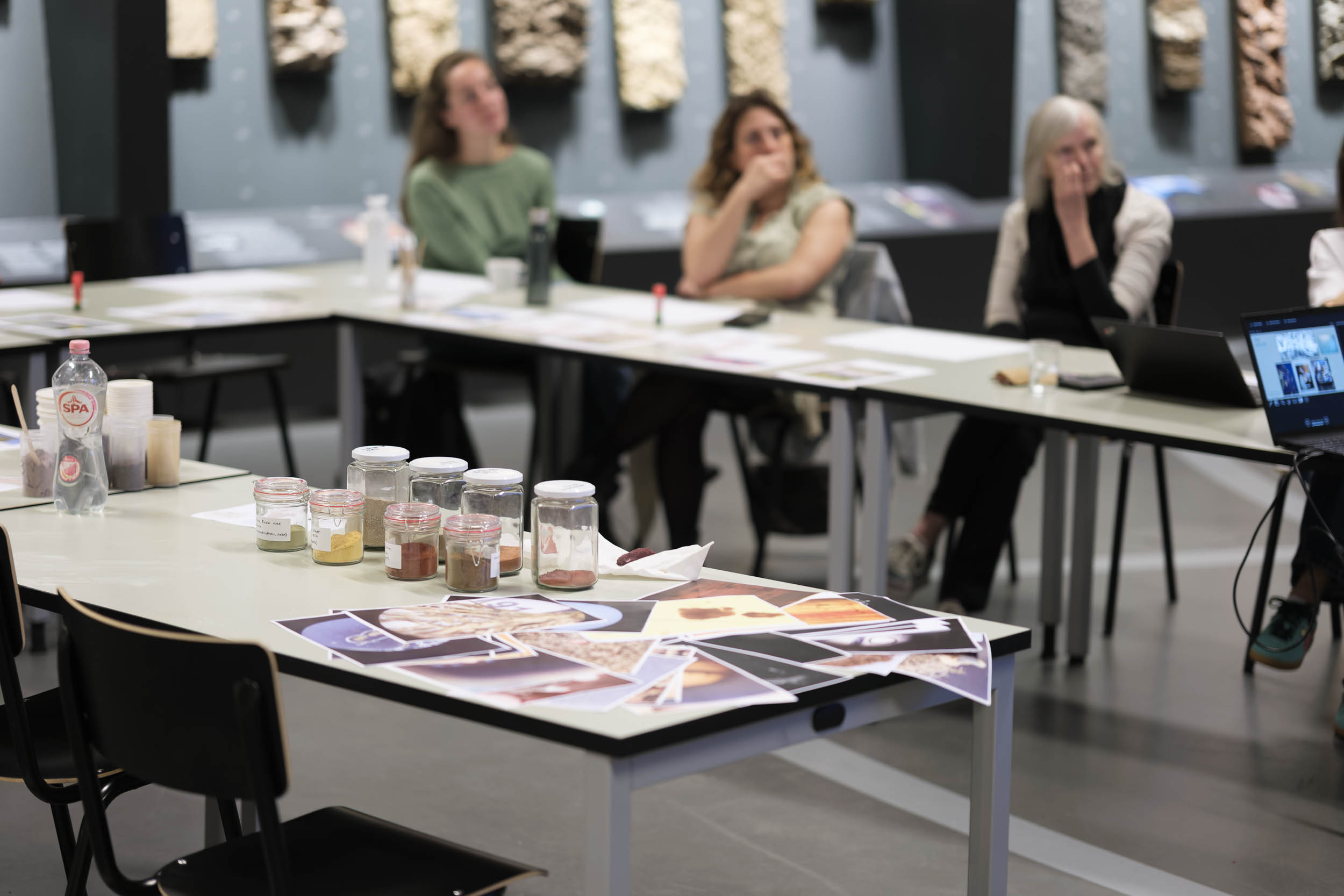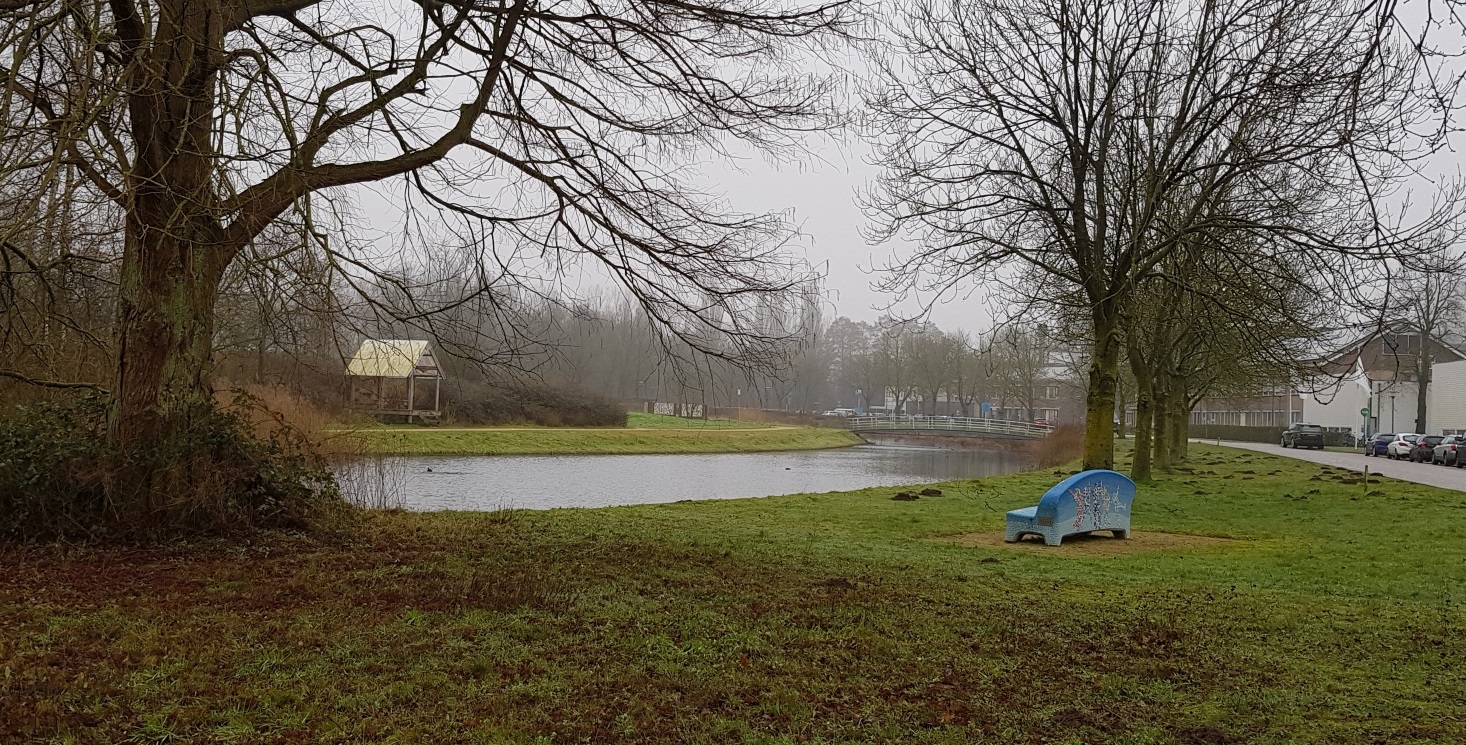One left and the other arrived – this calendar year, WUR had not one, but two artists in residence. The first transformed a scientific failure into an aesthetically interesting living artwork. The other finds auditory inspiration in the protein transition that he sees as a source of optimism. We asked artists Arne Hendriks and Remco de Kluizenaar: is there still hope?
‘We understand each other very well at heart’
Arne Hendriks, outgoing artist in residence: ‘Given that hope is a product of our imagination, and that imagination is what makes us human, there will be hope as long we don’t lose our imagination, and thereby ourselves. Our imagination maintains the internal mechanism that you need to be able to see at all, just as blinking stops us getting snow-blinded. Seeing is the product of comparing one moment with another, linked with a certain expectation about what is going to happen – just like imagination. Hope is the optimistic version of this mechanism. Where there’s hope, there’s life, as they say.
‘Perhaps it’s because of the time of year, but I was reminded of the work of the French artist Philippe Parreno, who once put a Christmas tree in a museum as a sculpture. The title of the work was something like “It’s an artwork for 11 months a year and in December it’s just a Christmas tree”. For 11 months of the year, the Christmas tree creates a reference point that we test reality by, until in the 12th month, the Christmas tree fits with what we accept as reality. At that point, Parreno’s work effectively becomes “invisible”.
‘Maybe that’s what an artist hopes for: that an idea that arose in the space of the imagination, the sculpture, eventually gets assimilated by society. Maybe that is also what I’m hoping for as artist in residence in Wageningen: that the new perspective on things we look at together ushers in a new reality. As an artist, you start decorating your Christmas tree some time in January, and it feels a bit uncomfortable – you get some funny looks and you can understand them too. And you hope that one day December will come.
I must say, to be honest, that during my residency, in spite of the Covid restrictions, I’ve met a lot of people who helped me decorate the tree. Of course, that’s because scientists and artists understand each other very well at heart. Both groups are looking for something. Together we imagine that something beautiful is starting. We haven’t given up hope.’
‘With the right narrative, anything is possible’
Remco de Kluizenaar, artist in residence: ‘Wageningen researchers and research projects inspire me, amaze me, and give me hope for a sustainable future for humanity. All the people I talk to are gentle and modest about their own contributions. And also very committed to the welfare of the whole planet. At WUR you feel surrounded by people who have the best of intentions for the world.
Personally, I am continuously swinging between moods of hope and of despair. I have a feeling that our society is at a tipping point – that we are now starting to mourn the loss of biodiversity, to realize the seriousness of the situation, and to go into action. The musician Nynke Laverman wrote a moving song about it, in which she apologizes for the consumer society. It’s called “Your Ancestor”. Two years ago, she couldn’t get the message across, she told me, but now people are open to it.
What does hope sound like? What does despair sound like? As a sound artist, I ran a competition in the protein transition group. That brought in fantastic entries. The buzzing of bumble bees from Thijs Feijen’s lupin research, for instance, which revealed a beautiful interaction: white lupin pollinated by bumble bees contains more protein. Converted into sound, it becomes a song, with the buzz of the bees like some kind of organ and the lupin pods rattling like shakers. Each sound is beautiful on its own, but in combination they’re gorgeous too.
The winning sound is spacy, a feast of technology, but a little bit spooky as well. It is the NMR resonance of hydrogen atoms in a protein, converted into the audible spectrum using software. The researchers express it very poetically as “the story of the oleosomes”. The point is that this NMR resonance tells you something about the structure of a protein. So without our knowing it, they have a story to tell us. It creates an inimitable sound that’s impossible to make with any digital synthesizer or physical instrument. But it sounds gorgeous and is vaguely reminiscent of the NASA sound recordings of the frequencies of the planets.
As a sound artist, I find it fascinating that technology that is actually intended for other purposes can also produce fantastic music. And it gives me hope for what else people might be able to use technology for. Anything is possible if only you have the right narrative.’
Art in practice
Arne Hendriks’ algae reactor Algeamist, which built on a ‘failed’ experiment by algae researcher Rick Wieggers, is on display at Rijswijk Museum until 16 January. Following an earlier computer game, Remco de Kluizenaar is currently working on a musical instrument inspired by the protein transition, plus an audio tour of the Wageningen campus that (subject to possible Covid restrictions) should be premiered in mid-February. Resource-online.nl will keep you informed.

 Artist in residence and sound artist Remco de Kluizenaar is currently developing a musical instrument based on the protein transition. Here he is with a trumpet and duckweed. Photo Duncan de Fey
Artist in residence and sound artist Remco de Kluizenaar is currently developing a musical instrument based on the protein transition. Here he is with a trumpet and duckweed. Photo Duncan de Fey 

